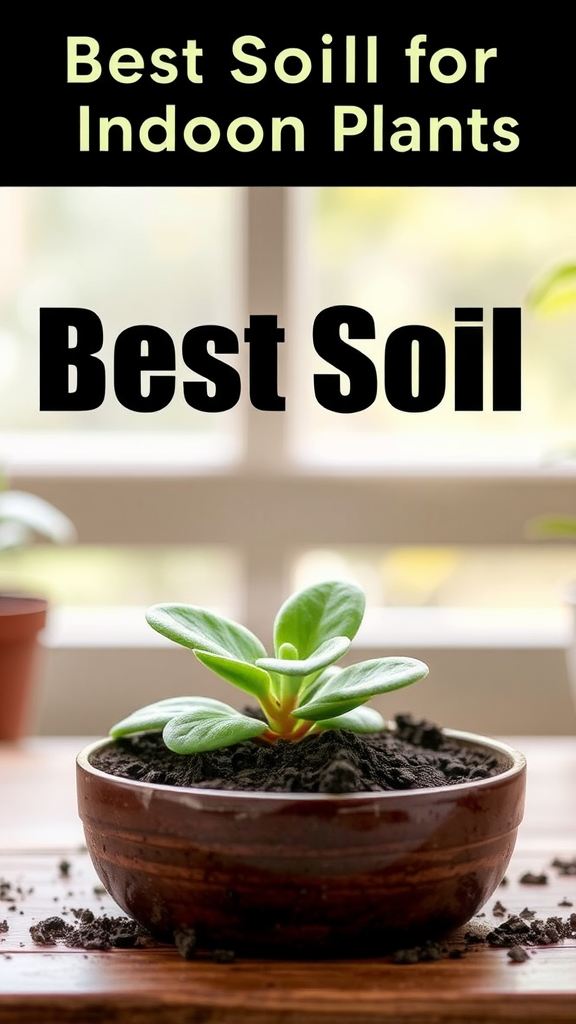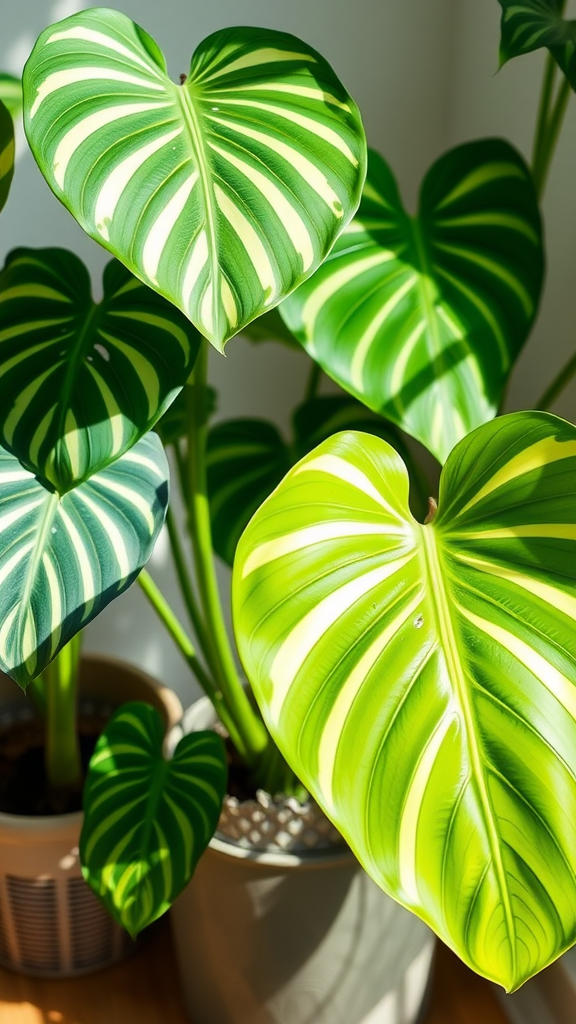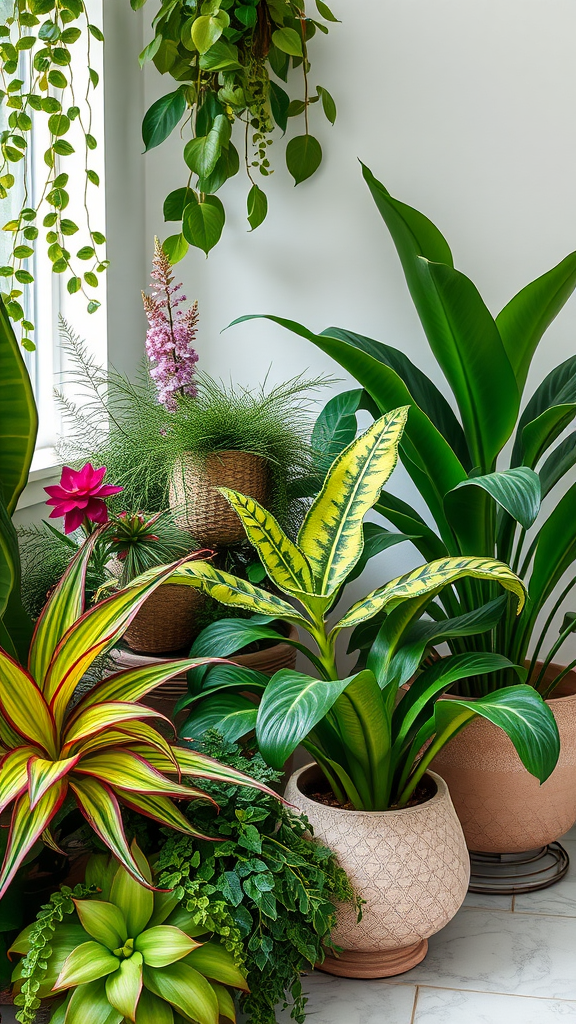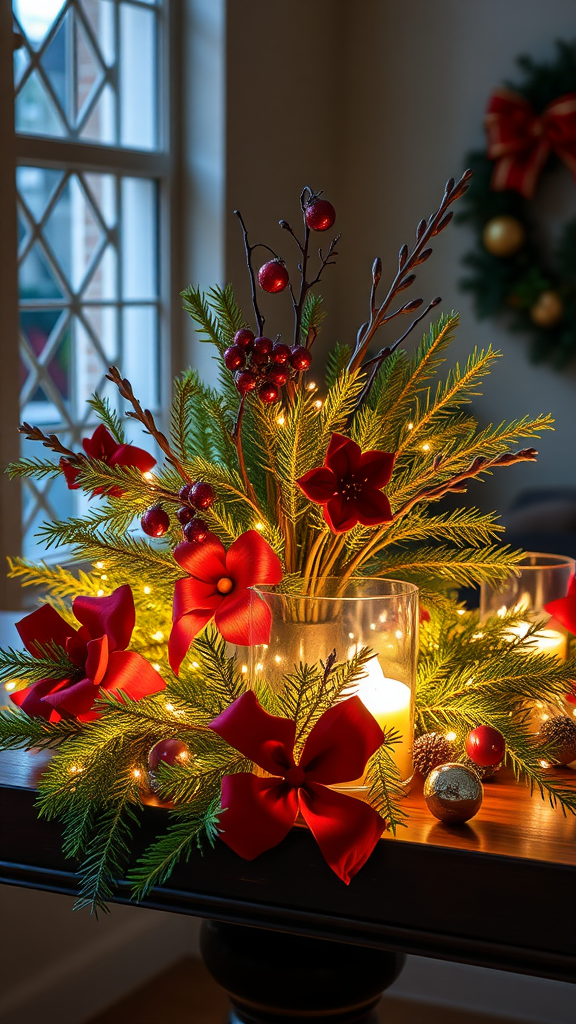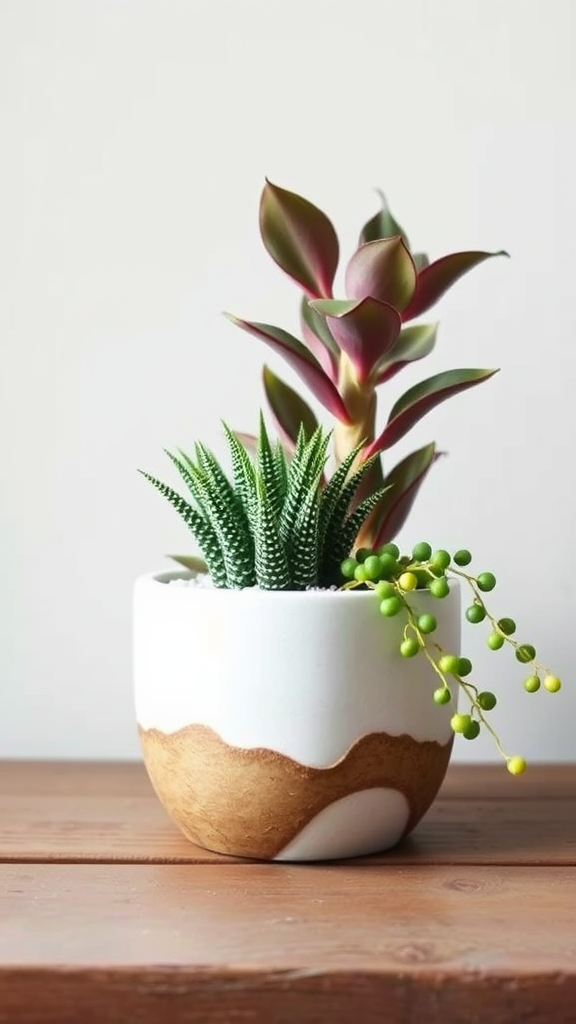Best Soil for Indoor Plants: Choosing the Right Mix for Healthy Growth
Choosing the best soil for indoor plants is crucial for their health and growth. With countless options available, understanding the right mix can make a significant difference. Using the appropriate soil helps retain moisture, provides essential nutrients, and enhances drainage, which is vital for potted plants.
Types of Soil for Indoor Plants
Indoor plants flourish in different soil types depending on their specific needs. Here are the most common soil types you might consider:
- Potting Mix: This is the most versatile and widely used mix. It’s typically lightweight and contains a balance of organic matter, peat moss, and perlite. Perfect for a variety of houseplants, potting mix retains moisture while allowing airflow.
- Cactus Mix: Succulents and cacti prefer arid conditions. Cactus mix usually includes sand and gravel, promoting excellent drainage. This mix is essential for preventing root rot.
- Seed Starting Mix: If you are starting plants from seeds, this mix is ideal. It often consists of fine particles and is free of fertilizers. This allows seedlings to develop roots without the risk of burning from excess nutrients.
- Orchid Mix: Orchids require a unique blend, usually made of bark, perlite, and charcoal. This combination allows airflow to the roots and prevents standing water, which orchids despise.
Elements of Quality Soil
Not all mixes are created equal. Here are key elements to look for in quality indoor plant soil:
- Drainage: Good soil should have excellent drainage properties. This is crucial to prevent water from pooling at the roots, which can lead to rot.
- Water Retention: While drainage is essential, the soil should also retain some moisture. A balance helps plants survive between watering.
- Nutrient Composition: The right soil contains essential nutrients. Look for mixes that include organic matter like compost, which fosters healthy plant growth.
- pH Level: The pH should range from 6.0 to 7.0 for most indoor plants. Testing your soil can help you maintain the correct acidity for optimal nutrient absorption.
How to Choose the Right Mix
Choosing the right soil mix is essential to keep your indoor plants thriving. Here are some tips to help you make the right decision:
- Identify Your Plants: Each plant has specific needs. Research the type of plants you have to find the optimal soil mix. For instance, tropical plants often need a more moisture-retentive soil than succulents.
- Consider the Pot Size: The size of your pot affects soil selection. Larger pots may require denser soil to provide stability, while smaller pots benefit from lighter mixes.
- Avoid Garden Soil: Regular garden soil can be too heavy and compacted for indoor plants. It may lead to poor drainage and unhealthy roots.
Tips for Maintaining Indoor Plant Soil
Once you’ve chosen the best soil for your indoor plants, proper maintenance is vital for sustaining healthy growth:
- Watering: Always check the soil moisture before watering. Overwatering can lead to root rot, while underwatering can stress plants.
- Fertilizing: Indoor plants may need additional nutrients. Consider using organic fertilizers during the growing season to boost their health.
- Repotting: Over time, soil can become compacted or depleted of nutrients. Repotting your plants every couple of years with fresh soil can rejuvenate their growth.
Understanding the best soil for indoor plants is about meeting the specific needs of your plants. Paying attention to the type of soil, its composition, and maintaining its conditions will ensure your plants grow healthily and thrive. When making your selection, consider what works best for your indoor garden, and your plants will thank you with their vibrant growth.
Common Mistakes to Avoid When Potting Indoor Plants
Potted indoor plants can truly brighten up your space, creating a calming and refreshing atmosphere. However, potting these plants can sometimes lead to mistakes that may hinder their growth and overall health. Avoiding these common pitfalls will ensure that your indoor garden thrives and flourishes beautifully.
Using the Wrong Potting Mix
One of the most frequent mistakes is using the wrong potting mix. Regular garden soil is not suitable for indoor plants because it can become compacted, lack drainage, and trap pests. It’s essential to choose a potting mix specifically formulated for indoor plants. These mixes typically contain peat moss, vermiculite, and perlite, promoting proper aeration and moisture retention.
Neglecting Drainage
Another common error is neglecting drainage. Always ensure that your pot has drainage holes at the bottom. Without these holes, water can accumulate and lead to root rot. You can also add a layer of stones or gravel at the bottom of the pot to further improve drainage.
Choosing the Wrong Pot Size
Choosing an inappropriate pot size is another mistake to watch out for. If the pot is too small, your plant might become root-bound, which stunts its growth. Conversely, a pot that is too large can hold too much moisture and lead to overwatering. A good rule of thumb is to select a pot that is 1-2 inches larger in diameter than the previous one.
Overwatering
Overwatering is one of the most common issues faced by indoor plants. It’s easy to assume that since your plant is in a pot, it needs frequent watering. However, many indoor plants prefer drying out slightly between waterings. To avoid overwatering, check the soil moisture level with your finger. If the top two inches of soil are dry, it’s time to water.
Not Considering the Light Requirements
Every plant has specific light needs that must be taken into account when potting. Placing your plant in a spot that doesn’t meet its lighting requirements may lead to poor growth. Be sure to research the particular needs of your plant before deciding on its location.
Forgetting to Fertilize
Another oversight is forgetting to fertilize your indoor plants. While potting mixes are often nutrient-rich, they eventually deplete. Fertilizing your plants during their growing season can help replenish nutrients. Use a balanced, water-soluble fertilizer every 4-6 weeks to encourage healthy growth.
Ignoring Temperature and Humidity
Indoor plants are sensitive to changes in temperature and humidity. Placing them near heating vents or drafty windows can stress them out. Furthermore, many indoor plants thrive in higher humidity levels. Using a humidity tray or a humidifier can help create an optimal environment for your plants.
Not Monitoring Pests
Pest infestations can be detrimental to indoor plants. Always check your plants for signs of pests like spider mites, aphids, or mealybugs. Regular inspections and early intervention can prevent a small problem from becoming a major issue.
Skipping Repotting
Failing to repot your plants can lead to numerous problems. As plants grow, they frequently outgrow their containers. Signs that a plant needs repotting include roots growing through the drainage holes or a stunted growth pattern. Repotting your plant every couple of years helps refresh the soil and gives the roots more space to grow.
Not Researching Plant Type
Every plant species has different needs, and assuming all plants require the same care is a misguided approach. Research your specific plant type to learn about its ideal potting conditions, watering frequency, and light requirements. Understanding the needs of your plant can significantly improve its health.
By being mindful of these common mistakes when potting your indoor plants, you can create a thriving environment for your green companions. Remember, the joy of indoor gardening lies in observing the growth and beauty that these plants bring to your home. Happy potting!
Conclusion
Selecting the best soil for your indoor plants is a crucial step in ensuring their growth and longevity. A well-balanced potting mix tailored to the specific needs of your plants can make all the difference. Factors like drainage, aeration, and nutrient retention should be at the forefront of your decision-making process. Remember, different plants thrive in different soil types. For example, succulents and cacti prefer a gritty, well-draining mix, while tropical plants typically enjoy more moisture-retentive soils.
Additionally, avoiding common mistakes when potting can significantly enhance your indoor gardening experience. Overwatering, using garden soil, and potting in containers without drainage holes are typical pitfalls that can jeopardize your plants’ health. Instead, opt for high-quality potting soil designed for indoor gardening, and ensure your pots provide adequate exit points for excess water.
By nurturing your plants with the right soil and avoiding common errors, you set the stage for vibrant, thriving greenery. Pay attention to your plants’ unique preferences, and don’t hesitate to adjust your practices as you learn. With consistent care and the right potting mix, your indoor garden can flourish, bringing joy and vitality into your home. Embrace the learning process, and enjoy watching your plants grow strong and healthy!

